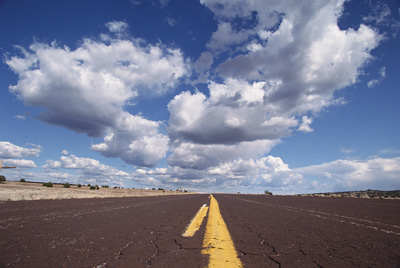|
Overview
As the summer months approach, the construction season is upon us, and with it work zones. It is likely we will all encounter some road work activity as we travel, commute or run errands. The key to safe travel through these areas is to be alert, slow down and drive cautiously when approaching any construction activity. In an effort to promote safe driving through these areas, The New York State Department of Transportation, the New York State Police and the New York Thruway are continuing their work zone safety program, Operation Hard Hat.
While NYSDOT and its contractors are continuously monitoring work zone traffic control and striving to improve work zone safety, motorists still have an important role: to drive responsibly. When crashes occur in work zones, they are often a result of aggressive driving, particularly excessive speed.
To encourage compliance with work zone speed limits and discourage aggressive driving behaviors, Operation Hard Hat provides increased enforcement in work zones by the New York State Police. However, these Troopers are deployed differently than is typical in work zone enforcement.
|
 |
 |
The Operation Hard Hat program utilizes Troopers located inconspicuously in the work zone to monitor vehicle speeds. A marked State Police cruiser (a "chase car") is notified by radio of any violations and issues tickets downstream of the work area.
Troopers may be using nontraditional platforms:
- they may be on foot,
- in a construction vehicle, or
- at another area not immediately obvious to motorists.
|
Variable message signs (VMS) will also be used to warn approaching motorists that the speed limit is radar enforced and to remind them to slow down before entering the work area. These enforcement details will be at different work zones on different days.
The goal of Operation Hard Hat is to promote safe driving habits through work zones and reduce speeds and aggressive driving.

Driving Safely in Work Zones
- In any work zone along any road, major or minor, Expect the Unexpected! Normal speed limits may be reduced, traffic lanes may be changed, and people and vehicles may be working on or near the road.
- Diamond shaped orange warning signs are posted in advance of road construction projects. Slow down! Be alert! Pay attention to the signs!
- In addition to other warning signs, a "flagger ahead" warning sign may be posted in the work zone. When you see this stay alert and be prepared to obey the flagger's directions.
- In a work zone, a flagger has the same authority as a regulatory sign so you can be cited for disobeying his or her directions.
- Stay calm. Work zones aren't there to personally inconvenience you. They're necessary to improve the roads for everyone.
- You may see flashing arrow panels or "lane closed ahead" signs. Merge as soon as possible. Don't zoom right up to the lane closure then try to barge in. If everyone cooperates traffic moves more efficiently.
- Motorists can help maintain traffic flow and posted speeds by moving to the appropriate lane at first notice of an approaching work zone.
- Slow down when the signs say to. A car traveling 60 m.p.h. travels 88 feet per second. If you're going 60mph, and you pass a sign that says "‘Road Work 1500 feet'" you'll be in that work zone in 17 seconds.
- The most common crash in a highway work zone is the rear end collision. Remember to leave two seconds of braking distance between you and the car in front of you. The amount of space required to provide two seconds of stopping time will increase the faster you're driving!
- Keep a safe distance between your vehicle and traffic barriers, trucks, construction equipment and workers. Just like you, highway workers want to return home safely after each day's work.
- Some work zones, like line painting, road patching, and mowing are mobile, moving down the road as the work is finished. Just because you don't see the workers immediately after you see the warning signs doesn't mean they're not out there. Observe the posted signs until you see the one that says you've left the work zone.
- Expect delays, plan for them and leave early to reach your destination on time.
- Highway agencies use many different and varying ways to inform motorists about the location and duration of major work zones. Often, the agencies will suggest a detour to help you avoid the work zone entirely. Plan ahead, and try an alternate route.
Source: U.S. Department of Transportation, Federal Highway Administration

Standard Work Zone Signs
 |
The Worker sign warns of workers in or near the roadway. |
 |
The Flagger sign warns drivers they are approaching a location where traffic will be controlled by a flagger. |
 |
The Road Work sign provides general warning of a highway work zone ahead. This sign indicates a work zone 1,000 feet ahead. |
 |
Lane reduction signs are used on multi-lane roadways to warn of a reduction in the number of lanes available for travel in one direction. This sign advises drivers that the left lane is closed. |
 |
Construction vehicle sign warns drivers that the truck they are following is a construction vehicle and may leave the lane to enter an active work area. |
 |
Flashing arrow boards warn drivers that the lane they are traveling in is closing ahead and a lane change is required. The arrow direction will indicate which lane is open for travel. |
 |
When only the four corners of the board are flashing, drivers must use caution, but do not change lanes. This light pattern is also used when work is on the shoulder of the roadway. |
© 2014 TLC Magazine Online, Inc. |









